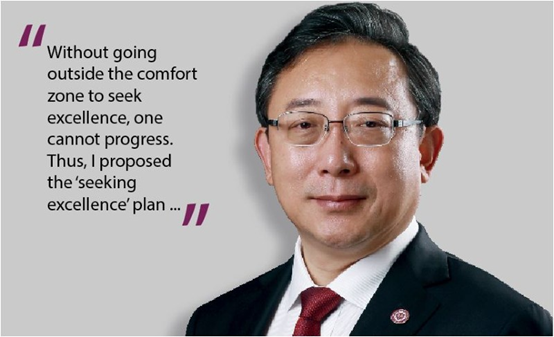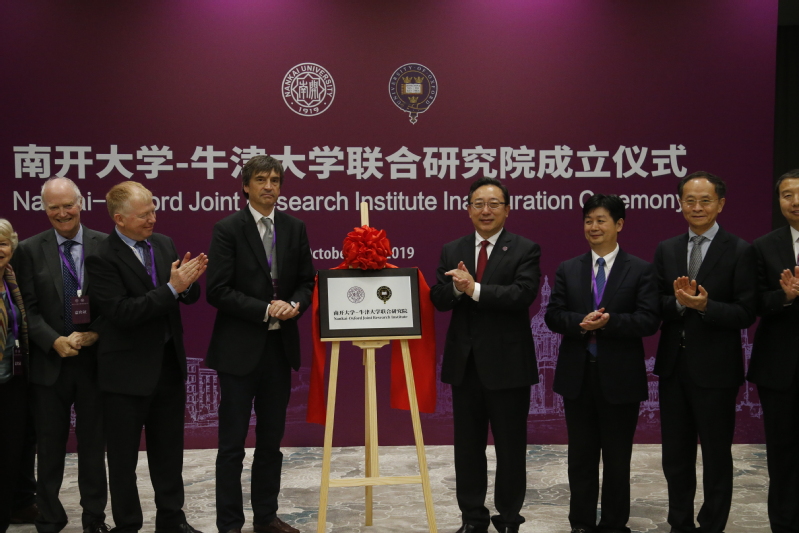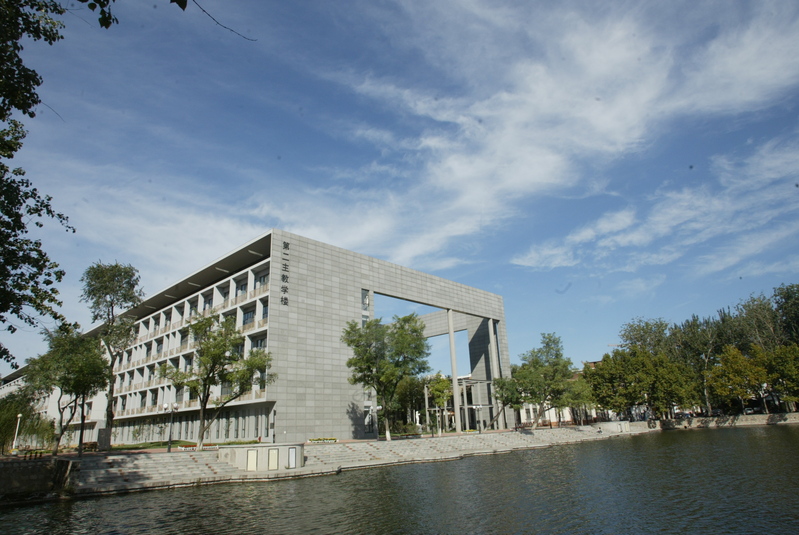ENTERING A NEW CENTURY OF SCIENTIFIC EXCELLENCE

Cao Xuetao, PhD. President, Nankai University Credit: Nankai University
Founded in 1919 by renowned educators, Yan Xiu and Zhang Boling, Nankai University is the alma mater of Zhou Enlai, the first Premier of the People’s Republic of China. A shining light for higher education in northern China, this national key university is one of the country’s most multidisciplinary. Its emphasis on the integration of scientific creativity and application has led to an enviable reputation for research and education. As Nankai enters a new century of development, its president, Cao Xuetao, outlines his vision and plans to pursue excellence for the university.
How was the plan to “make Nankai excellent” launched?
Nankai is a century-old university with a rich cultural heritage. When I came here last year to take on the presidency, I was eager to bring vitality, and break new ground for growth. Through field studies at different schools, I recognized a need for clear goals to increase vigour and promote research creativity. Without going outside the comfort zone to seek excellence, one cannot progress. I proposed the ‘seeking excellence’ plan, which aims to enhance Nankai’s edge with a comprehensive set of action plans.
The core components are: four schemes to enhance academic programmes; two incentive mechanisms to encourage taking initiatives in teaching and research; 10 interdisciplinary research centres on campus; and 10 joint research centres abroad.

Can you elaborate on the measures to increase the competitiveness of academic programmes?
Considering Nankai’s academic strengths, the four schemes are to ‘invigorate humanities’, ‘promote natural sciences’, ‘enhance engineering’, and ‘develop biomedicine’, seeking a balanced progression of all these programmes. Humanities, social sciences, and natural sciences are the traditional strengths we want to maintain, while for engineering and biomedicine, we need to find our advantageous edges and make breakthroughs. We encourage academic clusters and interdisciplinarity, with the hope of finding emerging fields. These schemes also extend beyond academic planning, and encompass reforming teaching, research, management and service systems.

How do you plan to achieve interdisciplinary collaboration?
As disciplinary boundaries are blurring, we are building platforms to facilitate collaboration and resource sharing. The plan to build 10 interdisciplinary research centres based on national strategic needs and our existing strengths will serve that purpose. We envision these centres as hubs of talented researchers, innovative students, and creative ideas.
In building these centres, we need to clarify our goals to determine the correct path. Careful field studies and discussions are required to find the right match. For now, we’ve decided on building an interdisciplinary centre for new energy, incorporating our strengths in chemistry, material science, physics, and environmental science to explore innovations in renewable energy conversion and storage.
Moreover, first-class scientists who play a leading role in bringing together multidisciplinary researchers and initiating truly interdisciplinary projects will be made centre leaders. To encourage integration, we’ll also allocate a budget of at least 30 million RMB per year to be centrally managed by a centre, rather than by separate schools.
Why is it important to reform the evaluation system?
Research evaluation plays a key role in driving work performance and output. Improving these mechanisms will boost productivity, motivate creativity, and facilitate sustainable growth. An over-emphasis on publication may have led to increased research output, but not necessarily high-quality results. Thus, while not excluding quantitative measures, we will not use the publication as the sole criterion. To encourage impactful research, we want to evaluate based on contribution to science and society. We are considering forming scientific committees for different subject areas, allowing individual schools to take the initiative.
We’ve also planned to construct two differentiated evaluation systems for teaching and research. With the right incentives and a fair mechanism, we want to truly motivate faculty members, whether they are devoted to teaching, social services, applied research, or fundamental studies.

How will you increase Nankai’s global influence?
Enhancing collaborations with world-class universities is integral to our plan. We want to build joint research centres abroad, focusing on issues of global importance, such as health, energy, and sustainable development, so that overseas talent can join us without leaving their usual work environment. Through interactions with the world’s advanced research systems, we hope to take part in or lead some big international science projects, attract top talent, accelerate research translation, and promote our global influence. We need to be proactive and are already in discussion with Oxford University to build a joint institute, possibly first focusing on medicine and life sciences.
Furthermore, we’ll leverage our alumni resources to promote our global image, and be more active in international consortia. Efforts will be made to enhance international exchange for students and young faculty members, making our education and talent training more global.
How do you plan to push research innovation?
Research innovation is seen as a key driver for economic growth and innovative capacity is the core of national competitiveness. While innovation includes scientific discoveries, technological inventions and engineering breakthroughs, it is important for China to improve its original innovation capacity, built on its rapid growth in research output.
For universities, we need to focus on advancing scientific discoveries, proposing new theories, and methodologies. With a tradition in basic research, Nankai has seen growing research breakthroughs in recent years. Our efforts to build platforms, such as our interdisciplinary or overseas research centres, also support innovation. Then, we need to bring in and foster innovative talent. To this end, Nankai has initiated a series of talent plans, coupled with the new mechanisms for evaluation and international collaboration, facilitating the growth of young and established scholars.

Give some examples of Nankai’s contribution to social and technological progress.
For the past century, we have always been committed to serving public good, following the university spirit of ‘dedication to public interests, acquisition of all-round capability and aspiration for daily progress.’ Our former president, Yang Shixian, a pioneer in pesticide chemistry, set a good example of benefiting society with research through the development of novel pesticides to ensure national food security. More recently, our efforts to improve research translation and support high-tech incubation have seen our research on bio-aviation fuel, graphene-based super batteries, and green pesticides turning into successful products bringing in great socio-economic benefits. Our social scientists also contribute to local or national policy-making with economic and urban development research, or directly providing policy advice or solutions for industrial growth.
We also contribute to society by providing excellent education, a core mission of a university. We have given rise to many leading figures in academia, industry, or the government, and are nurturing students with strong entrepreneurial spirits and sense of social responsibility.










